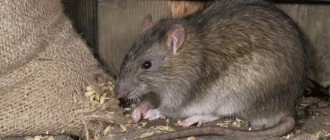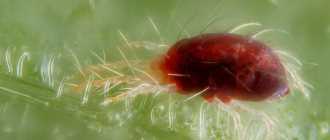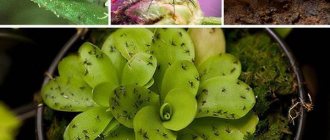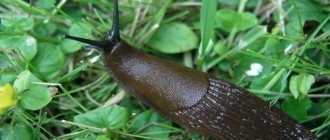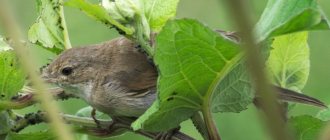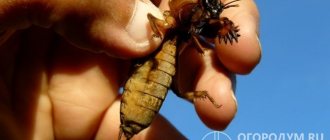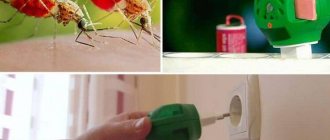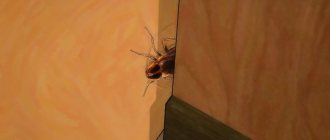Varieties and features of lifestyle
- Fact:
Modern scientists know about 9 thousand species of these insects. - Fact 2:
About 2 thousand are registered in our country. - Fact 3:
The name sawfly comes from the external similarity of the shape of the egg clutch with the surface of the saw. - Fact 4:
Regardless of species, sawflies have a common activity time.
Sawflies are very harmful insects that infect entire plantations of agricultural and forest coniferous plantations. This type of herbivorous pest is divided into many subspecies, each of which prefers to destroy a specific plant.
Description and photo
Modern scientists know about 9 thousand species of these insects. About 2 thousand are registered on the territory of our country. The name sawfly comes from the external similarity of the shape of the egg clutch with the surface of the saw. Certain categories of sawflies make the clutch much narrower than usual for these insects, which makes its penetration under the tree bark simpler and easier.
Larva
It's called a false caterpillar. It really looks a lot like the caterpillar of this beautiful winged creature. But there are also differences:
- Eyes. The larva has 2, the caterpillar has 6.
- Paws. Larvae – 6 or more pairs, caterpillars – no more than 5.
Sexually mature individuals
On the body, with a color depending on the species, a pair of double thin, rather long wings with coarse veins. The thoracic and abdominal sections are separated by a bridge, wider in width than in other hymenoptera, for example, the same bee.
Regardless of the species, sawflies have a common activity time. These are the spring and summer seasons. Reproduction occurs in autumn. If the weather is warm and dry, it is difficult to imagine better conditions for insect reproduction. The masonry is done on a coniferous bedding or directly in tree bark. Closer to frost, the larva penetrates the soil, wraps itself in a cocoon of cobwebs and waits for the onset of spring.
Developmental stages and nutrition
When an adult beetle emerges from a pupa in the spring, it immediately begins to consume soft, tender greenery. Having gained strength and nutrients, sawflies mate and prepare to give birth to offspring. The female pest chooses a suitable place for laying. Usually this is a tree leaf or pine needles. By making a microscopic cut with its ovipositor, the insect lays its eggs in a small cavity, where they remain for about 10 days. Then larvae emerge from them - small false caterpillars. They are called this because they have a different number of eyes and limbs than most species of caterpillars.
Interesting!
When in danger, the sawfly beetle larva begins to behave unusually - it simultaneously raises its hind and forelimbs. Certain species secrete a poisonous liquid from the mouth. These secretions can cause an allergic reaction on human skin.
Light green or yellow beetle larvae consume soft plant tissues with great appetite, and can sometimes move onto young shoots and tree bark. They crawl in flocks from one branch to another, leaving behind damaged leaves, rolled up or yellowed and chewed needles. In warm summer conditions and an abundance of plant food, the larvae reach a length of more than 4 cm by August or September and are ready to pupate. To do this, they find a secluded place on a tree or crawl down the trunk to burrow into fallen leaves.
Further development of the larva has two paths:
- After 2-3 weeks, an imago emerges from the pupa, ready for a new development cycle. Thus, during a season, a forest area can be damaged twice by the activity of these insects.
- The sawfly larva may sense the approaching cold weather and remain in the pupal stage until next summer. And in case of unfavorable conditions, the pupa remains in the ground for up to 2 years, waiting for the arrival of the long-awaited warmth.
sawfly beetle
Birch sawfly
- The larva is light emerald green in color. Size ~ 4.5 cm. There is a thin black stripe along the back, with a yellowish border along the edges. The head is large, pale yellow. Lucky – 11 pairs. The period of activity is July-September. They feed exclusively on birch leaves.
- The adult insect is dark-breasted and dark-headed with an orange or brownish-red abdomen with highlights. Size – 2-2.5 cm. The antennae are club-shaped, black with bright orange ends. Transparent wings with dark edges. Food: birch leaves.
Control measures:
- Digging up an area under trees before hibernation.
- Manual collection and destruction of larvae and cocoons.
- Treatment of trees with chemicals (Chlorophos, Metaphos) in June-July.
Prevention
The pine sawfly loves warm, dry, open areas of the forest. High humidity leads to diseases and death of pests. In addition, in nature it has many natural enemies: birds, ants, predatory and parasitic insects, and a lot of pathogenic bacteria.
All this is used in forests for prevention.
When creating plantings, it is necessary to make them mixed, interspersing pine trees with sections of deciduous trees, evenly planted, without breaks, clearings or bald spots. The edges should be made thick, with dense bushes. Sandy soils that are not rich in nitrogen need to be enriched by planting perennial lupine.
In the spring, it is necessary to inspect the trees and the litter under them for cocoons and pupae. Protect and promote the spread of anthills, attract insectivorous birds with the help of feeders.
Promote the spread of parasitic insects - tachins and parasites. A number of them are specific to the pine sawfly. Thus, Tetrastichus parasitizes eggs, and Microplectron and Gambrus are parasites of larvae in cocoons.
In the garden plot, prevention methods are simpler. When planting, pine trees do not need to be placed close to each other. It is necessary to carry out constant inspection of trees, cleaning of fallen needles, dry branches, weeds and digging up the ground under them. Planting tomatoes. Attracting birds and ants.
In dry, hot weather, you can increase the humidity by frequently watering the trees, this will also reduce the risk of pest attack.
Although the pine sawfly poses a serious threat to pine forests, with proper prevention the risk of its attack is greatly reduced, and constant inspection of the forest, timely detection and quickly taken control measures help keep pine forests healthy and beautiful.
Spruce sawfly
- The larva is almost coniferous, soft green in color. The eyes are black. The legs are sharp, 3 pairs at the beginning of the body and 7 (false) subsequent ones. Size – 1-1.5 cm. Food – young needles. In June they burrow into the forest floor of pine needles and grass to pupate.
- An adult is a small insect (5-6 mm). The color is black with yellow mouthparts, abdomen and wing veins. Endowed with the thinnest long antennae. The active period is April-June.
The spruce pest causes great damage to coniferous plantings. which greatly slows down their growth.
Control measures:
- Digging in the tree trunk area.
- Treatment with chemicals
How to deal with sawfly?
There are many methods against false caterpillar. This allows the gardener to choose the most affordable and effective.
Special means
To save the plant from a voracious pest, insecticides are used. The most effective drugs are considered to be the following:
- Karbofos. It contains several products at once and is a contact insecticide-acaricide.
- Chlorophos. Combines the action of a pesticide and an insecticide. Suitable for a wide range of crops grown in the garden.
- Arrivo. It has a contact and intestinal effect on the parasite. The main active ingredient is cypermethrin.
- Virin-Diprion. Allows you to fight sawfly even on pine and coniferous trees.
- Aktara. A universal insecticide that is highly effective against most pests.
- Confidor. Helps against sucking and gnawing parasites. Has contact-intestinal effects.
- Decis. Blocks the functioning of the digestive system of the false caterpillar.
The best drugs against plum sawfly are Karbofos, Tsidial, Rogor, Chlorophos, Cyanox, and for rapeseed - Aktelik. Processing most often has to be carried out twice.
Chemical sprays
Folk remedies
Systemic insecticides are recommended to be used when more than half of the crop is destroyed. In other cases, against sawfly caterpillars, it is better to use folk remedies that allow you to keep the fruits of plums, gooseberries, raspberries, and strawberries environmentally friendly.
The following infusions are most effective:
- Akonita. Place a kilogram of grass collected during flowering on a bucket of water, add 30 ml of alkali, and leave for two days. Before spraying, add liquid soap (40-50 ml).
- Daisies. A kilogram of crushed inflorescences and leaves is poured into a bucket of water. The liquid temperature should be 60-70 degrees. Leave the mixture for 12 hours, dilute again with water in a 1:1 ratio. Liquid soap is also added.
- Wormwood. Place 1.2 kg of slightly dried grass on a bucket of water. Leave for three days. Before use, add another 100 g of baking soda.
- Needles. Two kilograms of raw materials are poured into 10 liters of water. Leave the mixture for a week, stirring every day. It is filtered and diluted 1:5.
- Tansy. A kilogram of herb is placed in a bucket and filled with water, then boiled and left to brew for about 2 hours. Before use, filter and add 40 ml of liquid soap.
- Wood ash. Dilute with water in a ratio of 1:3 and leave for two days. Pass through a fine sieve or cheesecloth.
Folk remedies help only when there are very few pests. If there is a dominance of the larvae of this insect in the garden, you have to resort to chemical treatment.
Mechanical methods
You can fight the false caterpillar with similar methods only in a small area and in the initial stages:
- Pick off damaged fruits. To kill the insects, you need to boil them in boiling water. You cannot simply throw away contaminated material. The larvae will survive and produce offspring.
- The pest is collected from leaf blades by hand and then destroyed. The reason for the latter has already been described above.
When there are quite a lot of larvae, you can simply shake them off. The main thing is to take care in advance of the substrate where they will fall.
Sawfly or false caterpillar
Biological effects
Sawflies have natural enemies - ants, birds, but feeding the latter to attract them to a garden plot where fruits, berries and vegetables are grown is not entirely reasonable. It is better to fight the pest in this way when it comes to planting pine needles and pine trees.
Useful tips on growing plants and flowers.
Gooseberry sawfly (including yellow gooseberry)
- The larva is gray-blue, pale green (yellow ones with large growths or black spots). At the last stage of transformation, the caterpillar darkens and gets rid of its spots. 10 pairs of paws. Food: leaves of berry bush.
- An adult is gooseberry up to 7-8 mm, yellow – up to 6-7 mm. The wings are transparent, with black or brown markings. Food: leaves of currant and gooseberry bushes. Very gluttonous. From a distance, he brushes away a smaller copy of a wasp.
Active devouring of foliage ultimately leads to the death of a gooseberry or currant bush.
Control and prevention measures:
- Autumn digging of soil under a bush.
- Spring digging.
- Spraying with soapy tar solution.
- After flowering, treatment with pine needle or entobacterin extract.
- Treatment with chemicals (Chlorophos, anabasine sulfate).
Methods for controlling beetles and larvae
Any gardener and forestry worker is familiar with harmful insects. To understand that it is the sawfly that has taken over the trees, it is enough to take a close look at the crown of the tree. On the leaves, traces of the larvae's activity appear in the form of small paths and holes - mines, which are tunnels gnawed by voracious caterpillars. On conifers, the needles have convex places called galls.
After such lesions, the leaves and needles turn yellow and dry, and the tree is deprived of the normal functioning of photosynthesis processes. If you do not start to counteract the pest in time, the plants may die.
At the initial stage of infection of a small tree or shrub, you can try to collect the larvae by hand. Before you fight them with chemicals, you can first use folk remedies. Spray the crown of the tree with a solution of mustard, wormwood, tobacco or laundry soap. The same method is good as prevention. In advanced cases, when the number of larvae is too large, spraying with organophosphates, pyrethroids, and antiviral drugs will help. The most popular are:
- Chlorophos;
- Anabasine sulfate;
- Metaphos;
- Virin-diprion and others.
To prevent infection of neighboring plants, it is necessary to dig up the soil around the trunk of the diseased tree. To prevent a new wave of the next generation of sawflies, an adhesive ring is used. The trunk of the plant is coated with a special glue that does not lose its adhesive properties for a long time. Before overwintering, sawfly larvae will move down to the ground and become trapped.
Grain sawfly (stem sawfly)
- The larva is faded yellow, without legs. size – 12-14 mm. Light brown head. The end of the body is decorated with a spiked process.
- An adult is a black creature with a narrow body up to 1 cm. On the back there are shiny stripes or spots of pale yellow color. The paws are black, the first pair is yellow.
Pests feed on grain crops (wheat, rye, barley, oats), eating away the pulp of the stem. The spikelet dries out and breaks during harvesting.
Control measures:
- Deep plowing of plowed land.
- Stubble peeling (after harvesting the ear).
- Separate harvest.
- Treatment with insecticides (Break, Borey).
- Regular weeding.
Common pine sawfly
- The larva is pale yellow with a brown or black head. Size – 2.5-2.9 cm. Paws – 8 pairs. Overwinters in the soil under a tree.
- Adult insect. The female has a dark yellow or brown body with black sternum and dorsal markings. Size – 10 mm. A short mustache resembling a file. The male is black in color, thinner, has feathery whiskers, and yellow paws.
They feed on pine needles, completely destroying them. The tree weakens and becomes vulnerable to other pests and infections. Crimean pine is least susceptible to attack by the pine sawfly.
Control measures:
- Spraying with insecticides.
- Attracting birds.
- Breeding an anthill under a tree.
What is the habitat
The sawfly lives on almost all continents. Prefers cold or temperate climates. In Russia it occupies damp and shady forests.
Read on topic:
Features of the life activity of ladybugs
14.11.2020
Description of chironomids and their possible danger to humans
14.11.2020
What do cutworms look like and what harm do they cause?
14.11.2020
What do goliath beetles look like and can they be bred at home?
14.11.2020
For food they choose:
- fruit trees;
- berry bushes;
- ornamental plants.
There is a low probability of encountering the beetle in areas with a hot and dry climate.
Rapeseed sawfly
- The larva is black, the sides are pale green. Size – 2.5 cm.
- An adult individual has an orange elongated body, a black head and the same mustache. Size – 6-8 mm. Part of the paws, sternum and the edge of the wing are also shiny black.
Harmful to cabbage species (rapeseed, rutabaga, radish, turnip, radish, turnip).
Control measures:
- Autumn deep plowing of the soil.
- Timely weeding.
- Treatment with chemicals (for example, Actellik).
Apple sawfly
- The larva is faded yellow. Size – 1 cm. Legs – 10 pairs, the first 3 – thin and long. The head turns from black to brownish with age. Food: fruits of the tree.
- The adult pest is brown or black. Size – 6-7 mm. The chest is black, the wing is matte-transparent, dark, the paws are yellow. Food: nectar from a blossoming apple tree.
Due to the fault of the apple sawfly, the ovary falls off; one larva destroys 2-6 apples in its short life.
Control measures:
- Digging in the trunk circle and row spacing.
- Spraying the soil with dust during the flowering period.
- Treatment of set fruits with chemicals (Karbofos, DDT).
Geographical distribution
Sawflies Acantholyda erythrocephala are found in Northern and Central Europe, Ukraine, and Kazakhstan. The phytophage was introduced to North America in 1925. In the northern states and Canada, redhead weaver is a major pest of white pine. The European part, Siberia, Altai and Krasnoyarsk territories are the habitats of the sawfly in Russia.
The bread sawfly is distributed in the European part of Russia to the Leningrad and Yaroslavl regions in the north. The pest's range covers the Caucasus, Siberia, Central Asia, Western Europe, North Africa, the Middle East, Arabia, Northern Iran, the Hindustan Peninsula, Southeast Asia, and was introduced to Canada and the USA.[4]
Single weaver sawfly
- The larva is gray-green, with a dark dorsal stripe. Size – up to 2.5 cm. 6 pairs of paws and 1 pair of false paws.
- An adult insect has a black body, yellowish belly, black mustache and head. Size – 13-17 mm. The wings are pale yellow, slightly transparent.
They form nests of cobwebs on the branches of cone-shaped pine trees. They feed on pine needles.
Control measures:
- Destruction of spider nests.
- Treatment with chemicals.
- Digging up the soil.
How to get rid of pine sawfly: main types and control measures
It’s pleasant to walk through a pine forest - tall, slender trunks of pine trees rise up, green crowns rustle soothingly above, the air is filled with the smell of pine needles. The pine forest supplies people with high-quality wood and resin; it holds the soil together with its roots and increases the humidity around it, and its air is healing. The pine forest pacifies, brings peace and joy to the heart. By planting several pines in your dacha, you can create a small coniferous oasis for relaxation and peace, and it is very unpleasant when your pines are under threat. In addition to fire and various diseases, one of the main threats is the invasion of insect pests. Such pine pests are pine sawflies.

